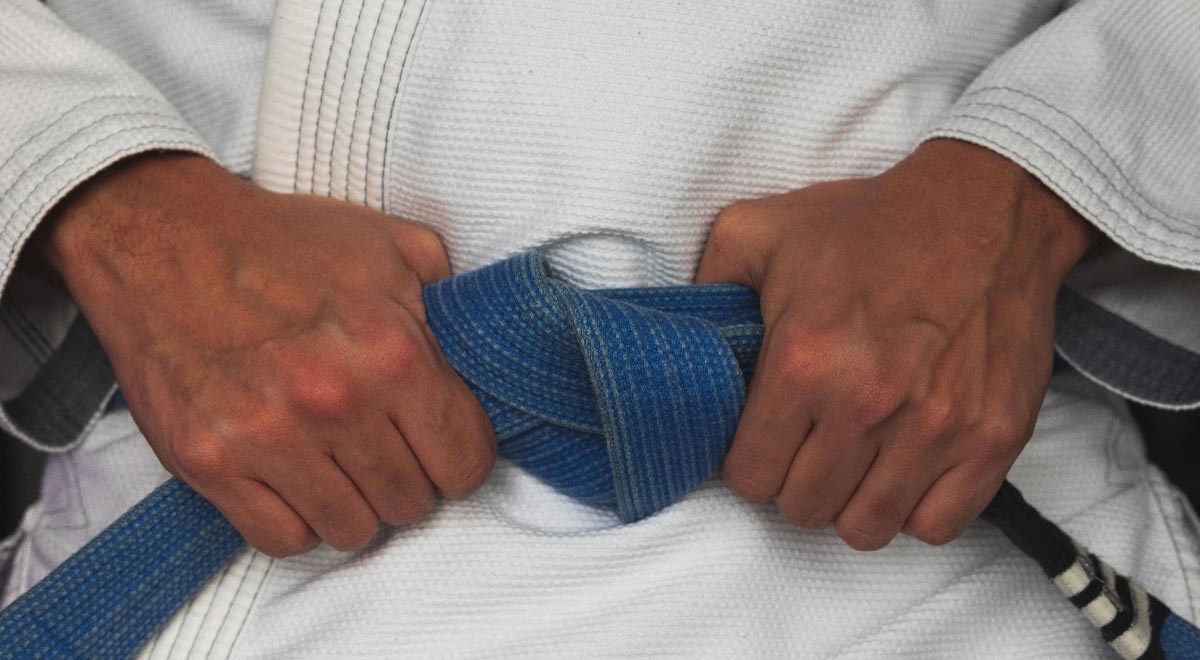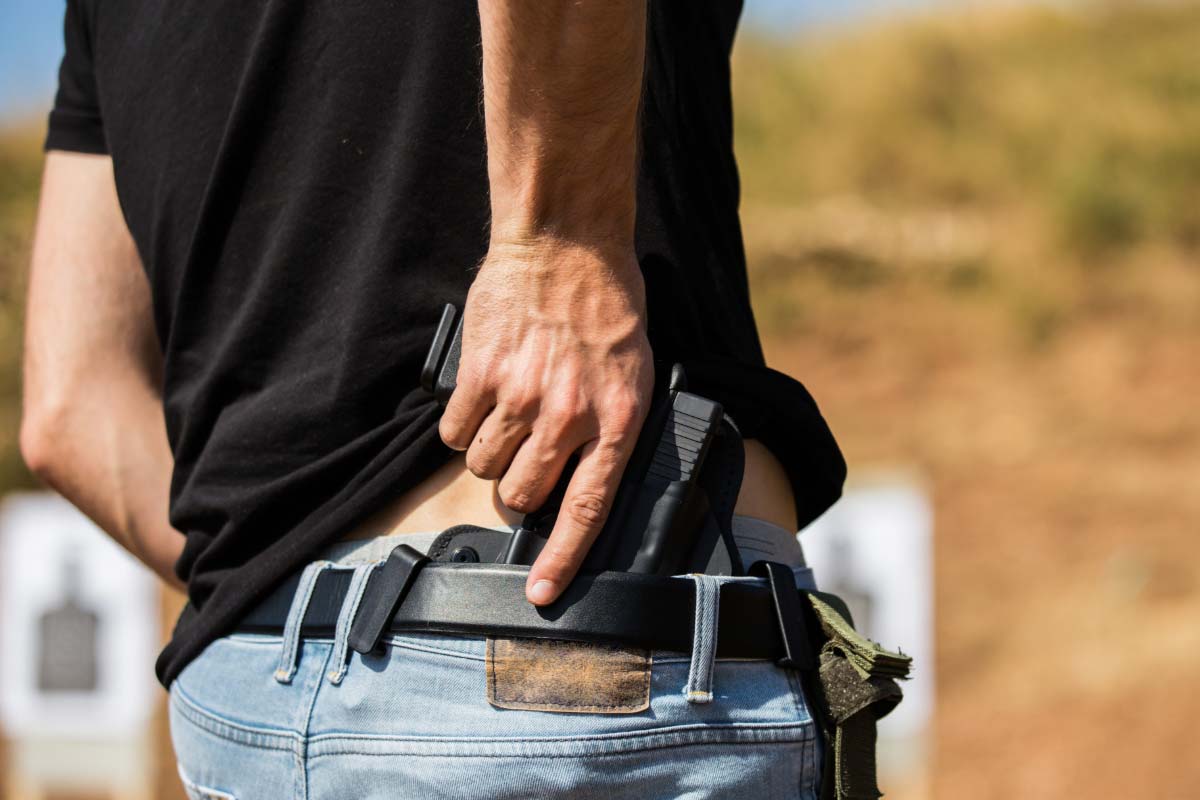Earning a blue belt in Brazilian Jiu-Jitsu (BJJ) is a big deal. It means you’ve worked hard, learned a lot, and are no longer a beginner. As a blue belt, you’re someone others look up to, and you’re expected to keep getting better and help others do the same.
In this article, we’ll talk about what being a blue belt really involves, from the skills you need to how you should act, and how to keep going even when it gets tough. If you’re new to BJJ or have been training for a while, this will help you see what it takes to move up in the world of martial arts.
This article covers:
What is a Jiujitsu Blue Belt?
In Brazilian Jiu-Jitsu (BJJ), a blue belt is the second adult rank and signifies a progression from the beginner level of a white belt. This is first belt you earn and represents a deeper understanding of the art, where practitioners begin to build upon the foundational techniques learned as white belts.
At this level, students typically develop a more comprehensive game, learning to execute techniques with greater competence and starting to develop their own style of grappling.
The blue belt is a significant milestone, often seen as the most important step in a practitioner’s long-term journey in BJJ (BJJ Fanatics). It is a rank where many decide to quit due to the time and effort required to achieve it, but for those who continue, it signifies a commitment to the art and the development of a strong grasp on fundamentals.
A BJJ blue belt is expected to have a solid understanding of the fundamental techniques and principles of Brazilian Jiu-Jitsu. They should know basic positions like guard, mount, side control, and back control, and be able to both attack and defend effectively from these positions.
Positions you should understand as a blue belt:
- Guard position
- Mount position
- Side Control position
- Back Control position
Blue belts should also understand the fundamental escapes from disadvantageous positions, basic submissions like armlocks, chokes, and leg locks, and have an ability to transition smoothly between positions.
Additionally, blue belts should start to develop defensive skills, such as guard retention and escape from bottom positions. They’re often expected to begin refining their offensive strategies, like setting up sweeps and submissions. They are typically capable of handling themselves against untrained opponents and have begun to build a more strategic approach to sparring and competition.
Blue belts should understand these fundamental escapes and techniques:
- Escapes: from positions such as mount and side control
- Basic submissions: armlocks (eg. Americana, Kimura), chokes (eg. rear naked choke, guillotine, leg triangle)
- Other techniques: balanced base, distributing weight, sweeps, and transitions between positions
The exact curriculum can vary by school, but generally, a blue belt should demonstrate a certain level of proficiency in these areas, reflecting a deeper understanding of BJJ beyond the beginner level.
For a more detailed breakdown of the skills and knowledge expected at this level, it would be necessary to refer to the curriculum of a specific BJJ school or organization.
The Milestone of Technical Proficiency
At the blue belt level, a practitioner’s technical proficiency comes to the forefront. This is where the foundational skills developed as a white belt are honed and expanded upon.
A blue belt is expected to flow through techniques with a degree of finesse and understanding that sets them apart from beginners. They should have a solid grasp of various positions and be able to execute and defend against common submissions and transitions.
Beyond the Basics
The transition from white to blue belt is marked by a significant increase in technical knowledge. Blue belts work to widen their range of techniques, ensuring they are well-prepared for the eventual step up to the purple belt.
It’s a stage where the thrill of the hunt becomes real—blue belts often find themselves chasing the skill level of purple belts while striving to stay ahead of the eager white belts.
Leadership and Responsibility
With the blue belt comes a newfound responsibility within the BJJ community. Blue belts are looked up to by white belts and are expected to set an example through both their skills and their conduct. They are often seen taking on informal leadership roles, helping to guide and inspire those who are just starting their BJJ journey.
The Blue Belt Curse and Overcoming It
The blue belt stage can also be a make-or-break time due to the notorious “blue belt curse,” where practitioners may feel a sense of complacency after achieving their first colored belt. Some might attend training less frequently, feeling as though they have reached a satisfactory level of skill, or they might fear the challenges that come with progressing towards a purple belt.
To overcome this, continuity and dedication are key. Showing up to class consistently is crucial for demonstrating a commitment to improvement and is often more impressive to coaches than technical skill alone.
Competition and Progression
For many blue belts, competition becomes a focal point. Competing is an excellent way to test skills under pressure, receive feedback, and accelerate progress. It’s a proving ground for those aiming to demonstrate their readiness for the next level.
Being a blue belt in BJJ means embodying the martial art’s principles both on and off the mat. It’s about technical growth, leadership, and the relentless pursuit of excellence.
The blue belt is a proud declaration that one is no longer a beginner but is instead on the path to mastery, with a commitment to the art that is visible in every roll and every class attended. It’s a significant step in a lifelong journey of learning, self-improvement, and martial arts development.







